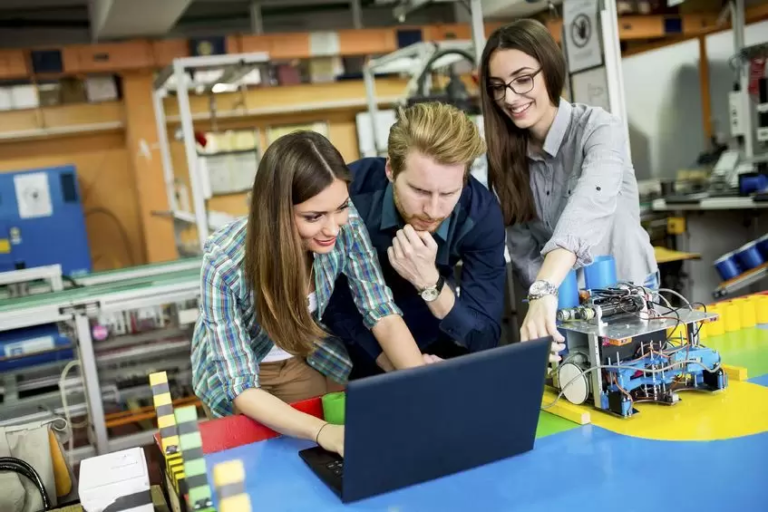Whether we speak about parent or school education, lots of things have changed over the past few years due to technology progresses. Education is a great challenge for years to come. New technologies are everywhere, and while society is slowly adapting to them, we also need to make education better to handle those technologies.
Robotics is a great way to provide children and students a more efficient technological education. Well, in fact, any people with any age can learn technology through robotics !
Learning has never been so fun
Many governments now try to put some programming in high school, to make students better prepared for the digital world waiting for them after their studies. However, learning programming and computer stuff can be very, very boring for some people, and discourage them very quickly. Fortunately, many efforts are done to make learning more “fun”, for example via graphical programming. Blockly is a great example : instead of writing lines of code, the student is moving graphical blocks, which is more entertaining.
Now, what if children and students could learn basic programming through a real physical system : a robot. Instead of just coding a virtual program, with a virtual execution, they could program and see the result happening on the robot. For example, they could program : “Go left -> wait for 2 seconds -> while the robot is not at point A, move forward -> then grab a tool -> etc”. The robot will execute this program, with real code made out of graphical blocks. By seeing what’s happening in the real world, students will be more focused and will be able to create/modify a program by directly observing the result.
This way of learning will make technology and programming more fun, so more students will be interested in that, and will be willing to go further and learn more things by themselves. Like everything else, motivation is the key !
Learning robotics is easier with the community and all the projects around it
When you learn robotics, you are not alone. Many projects are available online, with people ready to help you and give some advices through robotics forums, chats, etc..
Bringing robotics technology to students is not really hard. You can easily start to teach robotics (or learn by yourself !) with Arduino, a great open source electronics platform used in many DIY robotics projects. For more complex projects, or if you want to teach computer science, you can use Raspberry Pi, another open source project supported by the Raspberry Pi Foundation to bring accessible technology education to everyone in the world.
Robotics can teach you many fields
Robotics is a vast and huge domain, which relies on many subdomains, such as mechanics, electronics, and computer science.
When learning robotics (with a real robot, of course !), you get to know about all those 3 domains, separately, or all together. Each one is linked to each other. For example, for programming on a robot, you need to care about physical constraints, and thus about the mechanical design.
Robotics projects are cool for student groups. Students from different major can work together on one robotics system, which will motivate them, and let them get more knowledge about their major, and other’s major.
Students will be better prepared for their engineer jobs
Most engineering students, or students who are interested in engineering, are often asking the question : “But what does an engineer really do ?”. This question is really quite hard to answer, and many times students will know the answer when they start working.
By bringing robotics projects in high schools and universities, students will have the chance to get some answers to that question. They will :
- Work on a real physical system, like the ones you find in industry
- Deal with manufacturers
- Participate in robotics events
- Work in bigger teams with a lot of different profiles
- Learn valuable skills for real world jobs waiting for them.
Learn by doing, with accessible robots
With new technologies coming into education, and robotics growing a lot, bringing robotics into education seems like a great way to make it more fun and more efficient.
This was not really possible a few years ago. Robots as we know them are too expensive and hard to use, and not every school or university can afford to buy one or more for their students.
But things have changed, as robots start to be more and more accessible. For example, Niryo One, a 6 axis robotic arm, can be used in a robotics class, for a student robotics project, or even for robotics researches. It is an industrial-like robot, and is really low cost, so you don’t need to make a huge budget effort to get one (or many) and start to learn.
Accessible robotics is the opportunity for people to learn by using a real robot themselves, and not watching someone else doing it alone.




